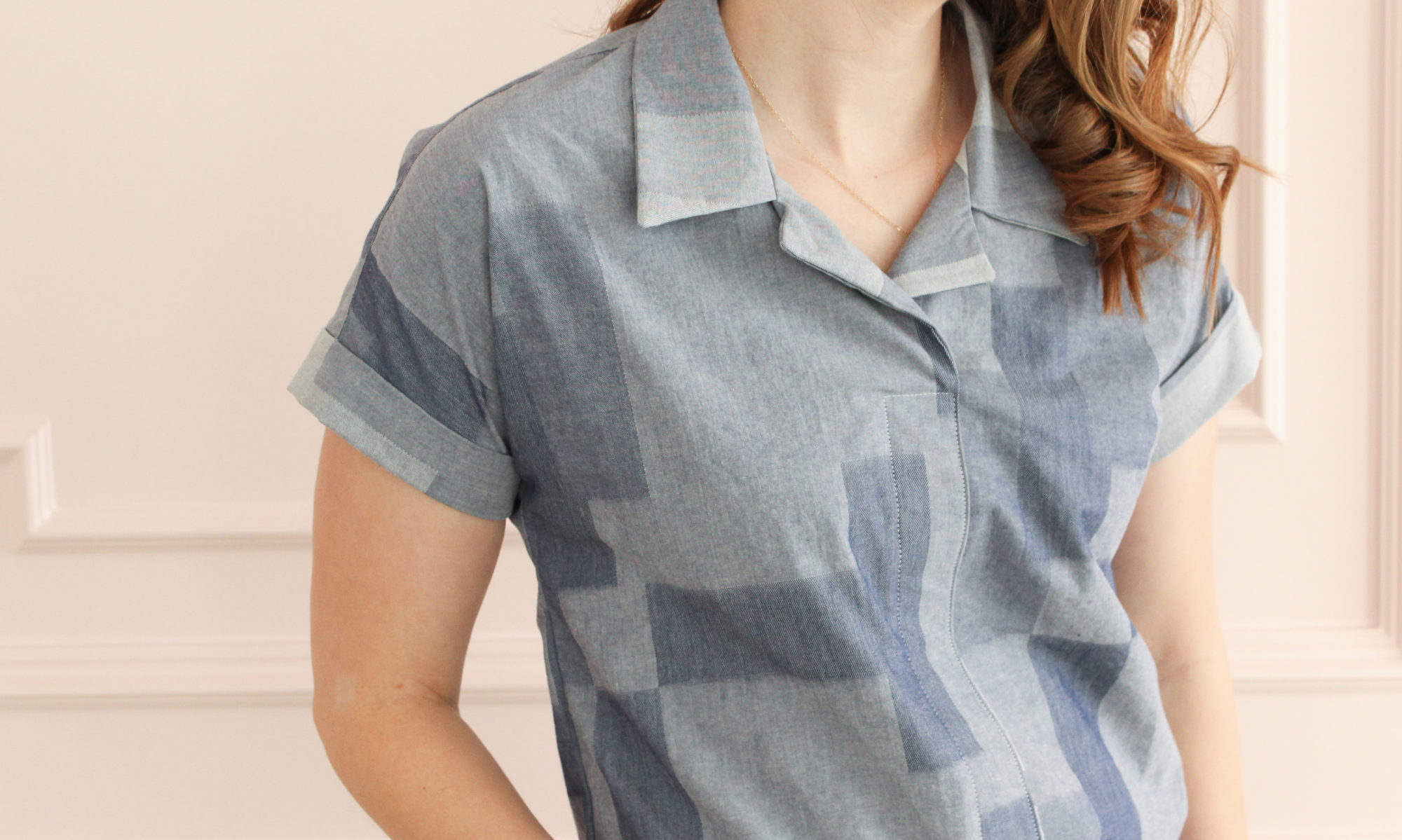(Disclosure: I was a tester for the Frisco Jumpsuit which means I received the pattern for free in exchange for my honest feedback during pattern testing. I was not obligated in any way to write a blog post or share about this pattern.)
Hello there! It’s been a minute or two. August has been all about spending time with my son before school started. After nearly a month off of sewing and blogging, I’m feeling recharged and ready to hit the ground running. First up, it’s time I told you about these pants I made back in July. They’re a hack of the newly released Threadbear Garments Frisco Jumpsuit. I’ve been waiting to share this post until I took styled photos of the actual jumpsuit I made during testing. Alas, that doesn’t seem to be happening so I decided to just go for it. Let’s get down to the details.

Fabric
Earlier this year, I made a Five Points Blouse (the one I’m wearing in these photos) using the navy stripe Verona Voile by Telio Fabrics. After a few months of wear, I loved the fabric so much that I decided to order more in a new color. I purchased this deep olive stripe cotton/rayon voile from Fabric.com via Amazon. The fabric feels so lightweight that sometimes I have to double check I’m actually wearing clothing. Basically, it’s a summer dream.

Sizing
During testing I discovered that Leslie’s pattern block happened to fit quite well with few alterations. For this project, I sewed a straight size 10 with 3 inches added to the leg length.

Hacking the Jumpsuit into Pants
This “hack” is actually such a breeze that I feel almost embarrassed to call it a pattern hack. Want to make your own Frisco pants? Just follow the next few steps:
- Grab your pattern pieces for the pant legs, waistband, and pockets.
- Remove length from the rise. I chose to remove 1″ from both the front and back rise. In a jumpsuit, you sometimes need that extra length for ease of movement, etc. Unless you want your pants to be suuuuuper high-waisted, removing a bit of length is a necessity.
- Sew pockets and pant legs as directed in pattern.
- Assemble waistband and facing and sew waist tie as directed in pattern.
- Place your waistband and waistband facing right sides together. Using a 3/8″ seam allowance, sew the top of the waistband and facing together. Turn right side out and press.
- Baste the bottom of your waistband pieces together.
- Making sure the outside of your waistband (not the facing) is against the right side of your pants, align notches and attach waistband to pants with a 3/8″ seam allowance. Finish raw edge as desired.
- Follow pattern instructions for inserting the waistband elastic and hemming.
Not too difficult, right?


Final Thoughts
Since I still haven’t fallen in love with shorts, dresses and lightweight pants are my lifeline in the summer heat. These Frisco Pants in cloud-like voile were a welcome wardrobe addition. In fact, I’ve gotten at least 10-15 wears out of them since making them in July. My favorite way to style them has been the faux jumpsuit look pictured above. A close second would be worn with my Cottesloe Swimsuit for a day spent near the water. As fall approaches, I’m anticipating the olive color to transition well into the season and look forward to playing around with cool weather styling.

The only thing I’d change in another pair would be removing an extra 1/2″ from the front and back rise. This pair sometimes feels a little long in the crotch. Honestly, that’s the only thing I don’t love about these pants. It’s such a small flaw and hasn’t kept me from reaching for my Frisco Pants every time they’re clean. Overall, I’d call them a successful hack.

Thanks for reading!























































































